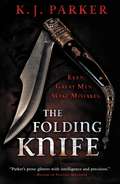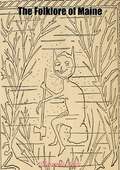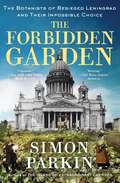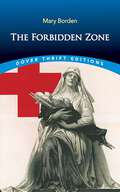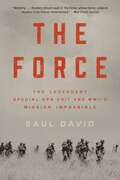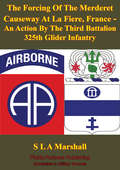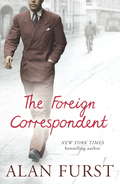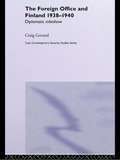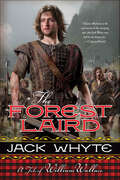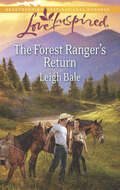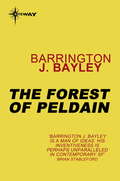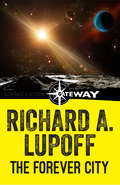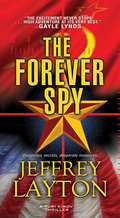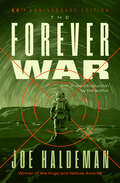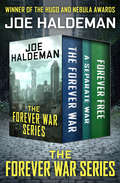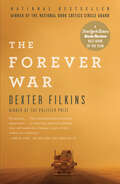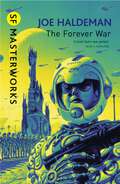- Table View
- List View
The Folding Knife
by K. J. ParkerBasso the Magnificent. Basso the Great. Basso the Wise. The First Citizen of the Vesani Republic is an extraordinary man. He is ruthless, cunning, and above all, lucky. He brings wealth, power and prestige to his people. But with power comes unwanted attention, and Basso must defend his nation and himself from threats foreign and domestic. In a lifetime of crucial decisions, he's only ever made one mistake. One mistake, though, can be enough.
The Folklore of Maine
by Horace P. Beck“THIS is not a scholarly book in the pedantic sense nor is it intended to be one. Neither is it a complete collection of Maine folklore. Rather, it is a selection of tales, beliefs, superstitions, songs, and customs of people of English-speaking stock in Maine. It is a book that attempts to give illustrations of most of the major aspects of folklore that are, or have been within the last twenty years, extant in the state.”—Horace P. Beck, Introduction“There is no dearth of folklore in the little state of Maine. This book has placed some important examples of folklore into their historical contexts. A diversified sampling is given and we are surprised to learn how much of folklore is a disguise or an exaggeration of the real past.”—Kirkus Review
The Forbidden Garden of Leningrad: A True Story of Science and Sacrifice in a City under Siege
by Simon ParkinFrom the winner of the 2023 Wingate Literary Prize comes a fascinating and moving untold story of the Leningrad scientists who risked everything for the future of humanity"An astonishing story brilliantly told... It is as moving as it is gripping to read"Jonathan Dimbleby, author of Endgame: 1944"A gripping, original and important story of courage and science in wartime" Roland Philipps, author of A Spy Named OrphanIn the summer of 1941, German troops surrounded the Russian city of Leningrad - now St Petersburg - and began the longest blockade in recorded history. By the most conservative estimates, the siege would claim the lives of three-quarters of a million people. Most died of starvation.At the centre of the embattled city stood a converted palace that housed the greatest living plant library ever amassed - the world's first seed bank. After attempts to evacuate the collection failed, and as supplies dwindled, the scientists responsible faced a terrible decision: should they distribute the specimens to the starving population, or preserve them in the hope that they held the key to ending global famine?Drawing on previously unseen sources, The Forbidden Garden tells the remarkable and moving story of the botanists who remained at the Plant Institute during the darkest days of the siege, risking their lives in the name of science."A beautifully-written account of one of the most extraordinary and little-known episodes of the Second World War -- a scientific feat and act of collective self-sacrifice the consequences of which continue to be felt today."Adam Higginbotham, author of Challenger
The Forbidden Garden of Leningrad: A True Story of Science and Sacrifice in a City under Siege
by Simon ParkinFrom the winner of the 2023 Wingate Literary Prize comes a fascinating and moving untold story of the Leningrad scientists who risked everything for the future of humanity"An astonishing story brilliantly told... It is as moving as it is gripping to read"Jonathan Dimbleby, author of Endgame: 1944"A gripping, original and important story of courage and science in wartime" Roland Philipps, author of A Spy Named OrphanIn the summer of 1941, German troops surrounded the Russian city of Leningrad - now St Petersburg - and began the longest blockade in recorded history. By the most conservative estimates, the siege would claim the lives of three-quarters of a million people. Most died of starvation.At the centre of the embattled city stood a converted palace that housed the greatest living plant library ever amassed - the world's first seed bank. After attempts to evacuate the collection failed, and as supplies dwindled, the scientists responsible faced a terrible decision: should they distribute the specimens to the starving population, or preserve them in the hope that they held the key to ending global famine?Drawing on previously unseen sources, The Forbidden Garden tells the remarkable and moving story of the botanists who remained at the Plant Institute during the darkest days of the siege, risking their lives in the name of science."A beautifully-written account of one of the most extraordinary and little-known episodes of the Second World War -- a scientific feat and act of collective self-sacrifice the consequences of which continue to be felt today."Adam Higginbotham, author of Challenger
The Forbidden Garden: The Botanists of Besieged Leningrad and Their Impossible Choice
by Simon ParkinFrom the award-winning author of The Island of Extraordinary Captives, the riveting, untold true story of the botanists at the world&’s first seed bank who faced an impossible choice during the Siege of Leningrad: eat the collection to prevent starvation, or protect their life&’s work to help end world hunger?In the summer of 1941, German troops surrounded the Russian city of Leningrad—now St. Petersburg—and began the longest blockade in recorded history, one that would ultimately claim the lives of nearly three-quarters of a million people. At the center of the besieged city stood a converted palace that housed the world&’s largest collection of seeds—more than 250,000 samples hand-collected over two decades from all over the globe by world-famous explorer, geneticist, and dissident Nikolai Vavilov, who had recently been disappeared by the Soviet government. After attempts to evacuate the priceless collection failed and supplies dwindled amongst the three million starving citizens, the employes at the Plant Institute were left with a terrible choice. Should they save the collection? Or themselves? These were not just any seeds. The botanists believed they could be bred into heartier, disease-resistant, and more productive varieties suited for harsh climates, therefore changing the future of food production and preventing famines like those that had plagued their countrymen before. But protecting the seeds was no idle business. The scientists rescued potato samples under enemy fire, extinguished bombs landing on the seed bank&’s roof, and guarded the collection from scavengers, the bitter cold, and their own hunger. Then in the war&’s eleventh hour, Nazi plunderers presented a new threat to the collection…Drawing from previously unseen sources, award-winning journalist Simon Parkin—who has &“an inimitable capacity to find the human pulse in the underbelly of war&” (The Spectator)—tells the incredible true story of the botanists who held their posts at the Plant Institute during the 872-day siege and the remarkable sacrifices they made in the name of science.
The Forbidden Zone (Dover Thrift Editions: Short Stories)
by Mary BordenIn 1914, Mary Borden, a wealthy heiress from Chicago and mother of three, volunteered for the French Red Cross during World War I. She quickly rose to the position of director of the French field hospitals in la zone interdite, known to English language speakers as the “Forbidden Zone,” near the Western Front of Belgium and France. Borden was troubled by the brutality she witnessed and the irony of wartime nursing—healing soldiers only to send them back to war and possibly their death. Her remarkable memoir, The Forbidden Zone, is a collection of vignettes written from 1914 to 1918. Initially censored due to its realistic portrayal of the war, her lyrical prose captures the chaos, devastation, and raw emotions of battle through seventeen fragmented stories, revealing the complex realities faced by nurses and soldiers. Borden’s narrative articulates the alienation, confusion, and dehumanization of industrialized warfare, offering modern readers a profound understanding of the war’s atrocities—effectively putting them in the room where it happened.
The Forbidden Zone: A Nurse's Impressions of the First World War (Hesperus Modern Voices)
by Mary BordenMary Borden worked for four years in an evacuation hospital unit following the front lines up and down the European theater of the First World War. This beautifully written book, to be read alongside the likes of Sassoon, Graves, and Remarque, is a collection of her memories and impressions of that experience. Describing the men as they march into battle, engaging imaginatively with the stories of individual soldiers, and recounting procedures at the field hospital, the author offers a perspective on the war that is both powerful and intimate.
The Force: The Legendary Special Ops Unit and WWII's Mission Impossible
by Saul DavidHailed as "a monumental achievement!" (Douglas Brinkley) and "an essential part of anyone's library" (Doug Stanton), The Force tells the riveting, true story of the group of elite US and Canadian soldiers -- mountainmen, lumberjacks, hunters, and explorers -- who sacrificed everything to accomplish a crucial but nearly impossible WWII mission.In December of 1943, as Nazi forces sprawled around the world and the future of civilization hung in the balance, a group of highly trained U.S. and Canadian soldiers from humble backgrounds was asked to do the impossible: capture a crucial Nazi stronghold perched atop stunningly steep cliffs. The men were a rough-and-ready group, assembled from towns nested in North America's most unforgiving terrain, where many of them had struggled through the Great Depression relying on canny survival skills and the fearlessness of youth. Brought together by the promise to take part in the military's most elite missions, they formed a unique brotherhood tested first by the crucible of state-of-the-art training-including skiing, rock climbing, and parachuting-and then tragically by the vicious fighting they would face. The early battle in the Italian theatre for the strategic fort cost the heroic U.S.-Canadian commando unit-their first special forces unit ever assembled-enormous casualties. Yet the victory put them in position to continue their drive into Italy, setting the stage for the Allies' resurgence toward victory in WWII. The unit, with its vast range of capabilities and mission-specific exercises, became a model for the "Green Berets" and other special forces groups that would go on to accomplish America's most challenging undertakings behind enemy lines. Knitting first-hand accounts seamlessly into the narrative-drawing on interviews with surviving members and their families; the memoirs, letters, and diaries of Forcemen; and declassified documents in the American, Canadian, British, and German archives -- The Force tells a story that is as deeply personal as it is inspiring.
The Forces' Sweethearts: The Bluebird Girls 3 (The Bluebird Girls #3)
by Rosie ArcherGripping, emotional Second World War saga for fans of Annie Groves, Shirley Dickson and Soraya Lane.1943, and The Bluebird Girls are at the top of their game. They are touring with ENSA, visiting army bases across the world in order to boost the morale of the brave boys fighting in the desert and the jungle. The hours are long and the travelling uncomfortable, but Bea, Rainey and Ivy wouldn't be anywhere else for the world.Then tragedy strikes the group and their little showbusiness family. Their manager, Blackie, and Rainey's mother Jo find themselves with heavy new responsibilities, and the change in circumstances causes the girls themselves to reconsider their lives.For years, singing on stage has been their only dream, and they have made so many sacrifices to get where they are. But now other possibilities - relationships, babies - are on the horizon. Could this be the end for The Bluebird Girls?(P) 2019 Quercus Editions Limited
The Forcing Of The Merderet Causeway At La Fiere, France: An Action By The Third Battalion 325th Glider Infantry [Illustrated Edition]
by Colonel S. L. A. MarshallContains 6 maps and illustrations.As the tens of thousands of American troops began their approach toward the forbidding German-defended Normandy coast, their comrades in the 82nd and 101st Airborne divisions had already flown over the Channel and began dropping and gliding into enemy territory. The Airborne Divisions had a role critical to the success of the entire Normandy Landings; beyond the initial beach landing areas were miles of flooded defended ditches and waterways. If the German troops managed to defend these bottlenecks the Americans on Utah Beach, at the extreme right of the operation, would be unable to move forward and might have foundered on the beach. The American airborne troops, like their British and Canadian compatriots on the left flank, were the elite of their respective armies and expected that their unique battle skills would enable them to deal with any tough mission that was bound to come their way.One such waterway was the Meredet river and its important bridge, this objective was handed to the troops of the 325th Glider Infantry who would wing their way in flimsy and dangerous gliders. As the brave 325th rushed the bridge they knew that their trial had only just begun; cut-off from their own troops on the beaches, lightly armed and surrounded by Germans who would try and respond to their capture of the pivotal bridge.S L A Marshall, the Official Historian for the European Theatre of Operations, interviewed the men of the 325th on their return to the U.K. and from this collected material set about recording this story of their courage, dedication and fighting skill.
The Foreign Correspondent
by Alan FurstThe next great page-turner from the master of the noir spy novel.By 1939, thousands of Italian intellectuals, teachers and lawyers, journalists and scientists, had fled Mussolini's fascist government and found refuge in Paris. There, amidst the poverty and difficulty of émigré life, they joined the Italian resistance, founding an underground press that smuggled news and encouragement back to their lost homeland. In Paris, in the winter of 1939, a murder/suicide at a lovers' hotel hits the tabloid press. But this is not a romantic tragedy, it is the work of OVRA, Mussolini's fascist secret police, and meant to eliminate the editor of Liberazione, a clandestine newspaper published by Italian émigrés. Carlo Weisz, who has fled from Trieste and found work as a foreign correspondent for the Reuters bureau, becomes the new editor.Weisz is, at that moment, in Spain, reporting on the tragic end of the Spanish civil war, but, as soon as he returns to Paris, he is pursued by the French Surete, by agents of OVRA, and by officers of the British Secret Intelligence Service. In the desperate politics of Europe on the edge of war, a foreign correspondent is a pawn, worth surveillance, or blackmail, or murder.The Foreign Correspondent is the story of Carlo Weisz and a handful of anti-fascists -- the army officer known as Colonel Ferrara, who fights for a lost cause in Spain, Arturo Salamone, the shrewd leader of a resistance group in Paris, and the woman who becomes the love of his Weisz's life, herself involved in a doomed resistance underground in Berlin, at the heart of Hitler's Nazi empire.
The Foreign Office and Finland: Diplomatic Sideshow (Contemporary Security Studies)
by Craig GerrardThe book looks at the ways in which the Northern Department of the Foreign Office approached matters pertaining to Finland in the years 1938-1940, concentrating on the particular issues of the proposed refortification of the Åland Islands, Finnish rearmament and aid to Finland during the Winter War with the Soviet Union. At the beginning of this period, the Northern Department officials aimed at giving support to Finland while, at the same time, attempting to create an environment where Finland and the Soviet Union could reach agreement, thus keeping Finland out of the German sphere of influence.
The Forest Laird: A Tale of William Wallace (The Guardians #1)
by Jack WhyteThis epic historical novel brings to life the hero of the Scottish Wars of Independence who struggled against the tyranny of the English.In the predawn hours of August 24, 1305, in London’s Smithfield Prison, the outlaw William Wallace—hero of all the Scots and deadly enemy of King Edward of England—sits awaiting the dawn, when he is to be hanged and then drawn and quartered. Wallace is visited by a Scottish priest to hear his last confession. Here, Wallace recounts his own incredible real-life story.We follow Wallace through his many lives—from fugitive to patriot, rebel, and kingmaker. His desperate struggles and victorious campaigns are all here, as are the high ideals and fierce patriotism that drove him to abandon the people he loved to save his country.With far more breadth, detail, and historical accuracy than the Hollywood film Braveheart, Jack Whyte’s masterful storytelling breathes life into Wallace’s tale, giving readers an amazing character study of the man who helped shape Scotland’s identity and future.
The Forest Of Vanishing Stars
by Kristin HarmelThe New York Times bestselling author of the “heart-stopping tale of survival and heroism” (People) The Book of Lost Names returns with an evocative coming-of-age World War II story about a young woman who uses her knowledge of the wilderness to help Jewish refugees escape the Nazis — until a secret from her past threatens everything. After being stolen from her wealthy German parents and raised in the unforgiving wilderness of eastern Europe, a young woman finds herself alone in 1941 after her kidnapper dies. Her solitary existence is interrupted, however, when she happens upon a group of Jews fleeing the Nazi terror. Stunned to learn what’s happening in the outside world, she vows to teach the group all she can about surviving in the forest — and in turn, they teach her some surprising lessons about opening her heart after years of isolation. But when she is betrayed and escapes into a German-occupied village, her past and present come together in a shocking collision that could change everything. Inspired by incredible true stories of survival against staggering odds, and suffused with the journey-from-the-wilderness elements that made Where the Crawdads Sing a worldwide phenomenon, The Forest of Vanishing Stars is a heart-wrenching and suspenseful novel from the #1 internationally bestselling author whose writing has been hailed as “sweeping and magnificent” (Fiona Davis, New York Times bestselling author), “immersive and evocative” (Publishers Weekly), and “gripping” (Tampa Bay Times).
The Forest Ranger's Return
by Leigh BaleA female ranger and a marine experience first love the second time around in this inspirational romance series from the award-winning author.After being injured in Afghanistan, former soldier Dal Savatch thought he’d lost everything. But working on a horse ranch for disabled children teaches him to appreciate the life he still has. When the new forest ranger in town turns out to be Dal’s first love, his tranquil world is turned upside down. For years, Julie Granger’s been carrying a painful secret that’s prevented her from having what she wants most: a family. Reuniting with Dal has her suddenly believing in dreams she thought were long buried. Can two wounded souls find healing and happiness in a future together?
The Forest Rose: A Tale Of The Frontier
by Emerson BennettThe Forest Rose: A Tale of the Frontier by Emerson Bennett is a captivating historical novel that transports readers to the rugged and untamed American frontier. Set in the early 19th century, this tale intertwines romance, adventure, and the struggles of pioneering life, painting a vivid picture of the challenges and triumphs faced by settlers.The story centers around Rose Forester, a spirited and courageous young woman, who becomes a symbol of resilience and grace amidst the harsh realities of frontier life. Rose’s beauty and kindness quickly make her a beloved figure within her community, but they also attract the attention of both noble suitors and dangerous foes. Her journey is marked by thrilling encounters with Native Americans, wild animals, and treacherous terrain, all of which test her strength and resolve.Emerson Bennett masterfully weaves together the lives of his characters, from the brave and determined frontiersmen to the loyal and resourceful women who stand by their sides. The novel explores themes of love, loyalty, and survival, capturing the essence of the American spirit during a time of expansion and exploration."The Forest Rose" is rich with detailed descriptions of the landscape, the daily struggles of frontier life, and the cultural clashes that defined the era. Bennett's storytelling is both engaging and informative, offering readers a window into a bygone era where the wild frontier was both a land of opportunity and danger.As Rose navigates her way through love and loss, friendship and enmity, her story becomes a testament to the enduring human spirit and the power of hope. Bennett’s portrayal of life on the frontier is both romantic and realistic, providing a balanced view of the hardships and the beauty of the untamed wilderness.The Forest Rose: A Tale of the Frontier is a timeless adventure that continues to resonate with readers who appreciate historical fiction and tales of perseverance and romance. Bennett’s novel is an essential read for anyone captivated by the pioneer era and the indomitable spirit of those who dared to tame the wild frontier.
The Forest of Peldain
by Barrington J. BayleyLife was not possible on that watery world except on the Hundred Islands. The Empire of Arelia ruled them all - all except one. Peldain was entirely covered with a forest so impenetrable and so deadly that all attempts to explore it were disastrous. Then a man came out of that jungle - a human - who told the Arelians that at the center of the island a secret kingdom flourished. There was nothing for it but to organise an expedition. However deadly the alien forest might be, if one man could get out, an army could get in. So Lord Vorduthe landed and began the assault on the great green enemy. Nobody could have foreseen the horrors with which the forest defended itself. Nobody could have foreseen the price that would be paid by Vorduthe's men. And only Vorduthe himself would learn the incredible secret of the island...if his mind could stand it.
The Forest of Vanishing Stars
by Kristin HarmelYona has used her knowledge of the wilderness to help hundreds of Jews escape the Nazis. But what happens when a secret from her past emerges and threatens everything? After being stolen from her wealthy German parents and raised in the unforgiving wilderness of eastern Europe, a young woman finds herself alone in 1941 after her kidnapper dies.Her solitary existence is interrupted, however, when she happens upon a group of Jews fleeing the Nazi terror. Stunned to learn what's happening in the outside world, she vows to teach the group all she can about surviving in the forest – and in turn, they teach her some surprising lessons about opening her heart after years of isolation.But when she is betrayed and escapes into a German-occupied village, her past and present come together in a shocking collision that could change everything.Praise for Kristin Harmel: 'A powerful story of survival and resilience. I couldn't put it down' - Heather Morris'A cracking story and characters that zing from the page. Totally immersive' - Liz Trenow
The Forest of Vanishing Stars: A Novel
by Kristin HarmelParade &“Best Books of Summer&” pick * Real Simple pick * She Reads &“Best WWII Fiction of Summer 2021&” pick The New York Times bestselling author of the &“heart-stopping tale of survival and heroism&” (People) The Book of Lost Names returns with an evocative coming-of-age World War II story about a young woman who uses her knowledge of the wilderness to help Jewish refugees escape the Nazis—until a secret from her past threatens everything.After being stolen from her wealthy German parents and raised in the unforgiving wilderness of eastern Europe, a young woman finds herself alone in 1941 after her kidnapper dies. Her solitary existence is interrupted, however, when she happens upon a group of Jews fleeing the Nazi terror. Stunned to learn what&’s happening in the outside world, she vows to teach the group all she can about surviving in the forest—and in turn, they teach her some surprising lessons about opening her heart after years of isolation. But when she is betrayed and escapes into a German-occupied village, her past and present come together in a shocking collision that could change everything. Inspired by incredible true stories of survival against staggering odds, and suffused with the journey-from-the-wilderness elements that made Where the Crawdads Sing a worldwide phenomenon, The Forest of Vanishing Stars is a heart-wrenching and suspenseful novel from the #1 internationally bestselling author whose writing has been hailed as &“sweeping and magnificent&” (Fiona Davis, New York Times bestselling author), &“immersive and evocative&” (Publishers Weekly), and &“gripping&” (Tampa Bay Times).
The Forever City
by Richard A. LupoffTeenage camera operator Alfonso Petrov joins a research mission bound for the edge of the solar system. But survival becomes another mission when the research team's tiny spacecraft strays into the Fiction Dimension. A madcap tale blending classic science fiction with Gothic horror.
The Forever Spy (A Yuri Kirov Thriller #2)
by Jeffrey LaytonA shocking disaster threatens to trigger a new Cold War . . .Deep beneath the ice-covered Arctic Ocean, a massive oil spill threatens destruction on an untold scale. Yuri Kirov, a former operative for the Russian Navy and an expert in state-of-the-art underwater vessels, is pressed into duty—America’s only hope at limiting the damage. When Yuri’s past is exposed by a turncoat spy, he is blackmailed into taking on a risky subsea espionage mission. With the future of his newly adopted country at risk—and his loved ones in the line of fire—Yuri must lead his crew into the iciest depths before tensions boil over—while an unseen enemy pushes both superpowers one step closer to the brink . . .Praise for the first Yuri Kirov thriller, The Good Spy“The excitement never stops . . . high adventure at its very best.”—Gayle Lynds“An explosive, high-stakes thriller that keeps you guessing.” —Leo J. Maloney“A page-turner with as much heart as brains.” —Dana Haynes“A fast-paced adventure that will take readers on a thrilling journey.” —Diana Chambers“Breathless entertainment.” —Tim Tigner
The Forever War (The Forever War Series #1)
by Joe HaldemanA soldier experiences the toll of interstellar war against a deadly alien foe in this Hugo and Nebula Award–winning science fiction masterpiece. In this novel, a landmark of science fiction that began as an MFA thesis for the Iowa Writers&’ Workshop and went on to become an award-winning classic—inspiring a play, a graphic novel, and most recently an in-development film—man has taken to the stars, and soldiers fighting the wars of the future return to Earth forever alienated from their home. Conscripted into service for the United Nations Exploratory Force, a highly trained unit built for revenge, physics student William Mandella fights for his planet light years away against the alien force known as the Taurans. &“Mandella&’s attempt to survive and remain human in the face of an absurd, almost endless war is harrowing, hilarious, heartbreaking, and true,&” says Pulitzer Prize–winning novelist Junot Díaz—and because of the relative passage of time when one travels at incredibly high speed, the Earth Mandella returns to after his two-year experience has progressed decades and is foreign to him in disturbing ways… Now celebrating its 50th anniversary, The Forever War is based in part on the author&’s experiences in Vietnam. It is regarded as one of the greatest military science fiction novels ever written, capturing the alienation that servicemen and women experience even now upon returning home from battle. This book shines a light not only on the culture of the 1970s in which it was written, but also on our potential future. &“To say that The Forever War is the best science fiction war novel ever written is to damn it with faint praise. It is…as fine and woundingly genuine a war story as any I&’ve read&” (William Gibson). This ebook features an illustrated biography of Joe Haldeman including rare images from the author&’s personal collection
The Forever War Series: The Forever War, A Separate War, and Forever Free (The Forever War Series)
by Joe HaldemanThe Hugo and Nebula Award winner that William Gibson called the “best science-fiction war novel ever written” and its sequel—plus a powerful story that links the two. This collection brings together Joe Haldeman’s widely acclaimed military science fiction classic, The Forever War; a novelette featuring hero William Mandella’s life partner, Marygay Potter; and the epic concluding novel to the saga. The Forever War: Conscripted into service for the United Nations Exploratory Force, Pvt. William Mandella fights for Earth light years away against an alien enemy. After surviving a harrowing two years of combat, Private Mandella and his fellow soldiers return home only to discover decades have passed due to the time dilation caused by space travel. Society has evolved into a civilization beyond the veterans’ comprehension, offering them no place to go but back into the military and a never-ending cycle of interstellar conflict that occurs over months while Earth ages centuries. “A Separate War”: Marygay Potter, reassigned and separated from her lover, William Mandella, continues fighting in military engagements across the stars—all the while planning how she and Mandella can reunite despite the time and space between them. Forever Free: Human beings have become a single hive-mind. Unwilling to sacrifice his individuality, William Mandella has joined other war veterans in exile on the half-frozen world known as Middle Finger, hoping to live in peace with Marygay and their children. But Humanity needs the genes of veterans to continue their evolution, forcing Mandella and his family to escape on an odyssey that will alter their lives forever.
The Forever War: Dispatches From The War On Terror
by Dexter FilkinsFrom the front lines of the battle against Islamic fundamentalism, a searing, unforgettable book that captures the human essence of the greatest conflict of our time. Through the eyes of Dexter Filkins, the prizewinning New York Times correspondent whose work was hailed by David Halberstam as "reporting of the highest quality imaginable," we witness the remarkable chain of events that began with the rise of the Taliban in the 1990s, continued with the attacks of 9/11, and moved on to the wars in Afghanistan and Iraq. Filkins's narrative moves across a vast and various landscape of amazing characters and astonishing scenes: deserts, mountains, and streets of carnage; a public amputation performed by Taliban; children frolicking in minefields; skies streaked white by the contrails of B-52s; a night's sleep in the rubble of Ground Zero. We embark on a foot patrol through the shadowy streets of Ramadi, venture into a torture chamber run by Saddam Hussein. We go into the homes of suicide bombers and into street-to-street fighting with a battalion of marines. We meet Iraqi insurgents, an American captain who loses a quarter of his men in eight days, and a young soldier from Georgia on a rooftop at midnight reminiscing about his girlfriend back home. A car bomb explodes, bullets fly, and a mother cradles her blinded son. Like no other book,The Forever War allows us a visceral understanding of today's battlefields and of the experiences of the people on the ground, warriors and innocents alike. It is a brilliant, fearless work, not just about America's wars after 9/11, but ultimately about the nature of war itself.
The Forever War: Forever War Book 1 (S.F. MASTERWORKS #54)
by Joe HaldemanPrivate William Mandella is a reluctant hero in an interstellar war against an unknowable and unconquerable alien enemy. But his greatest test will be when he returns home. Relativity means that for every few months' tour of duty centuries have passed on Earth, isolating the combatants ever more from the world for whose future they are fighting.Winner of the HUGO AWARD for best novel, 1976Winner of the NEBULA AWARD for best novel, 1975
